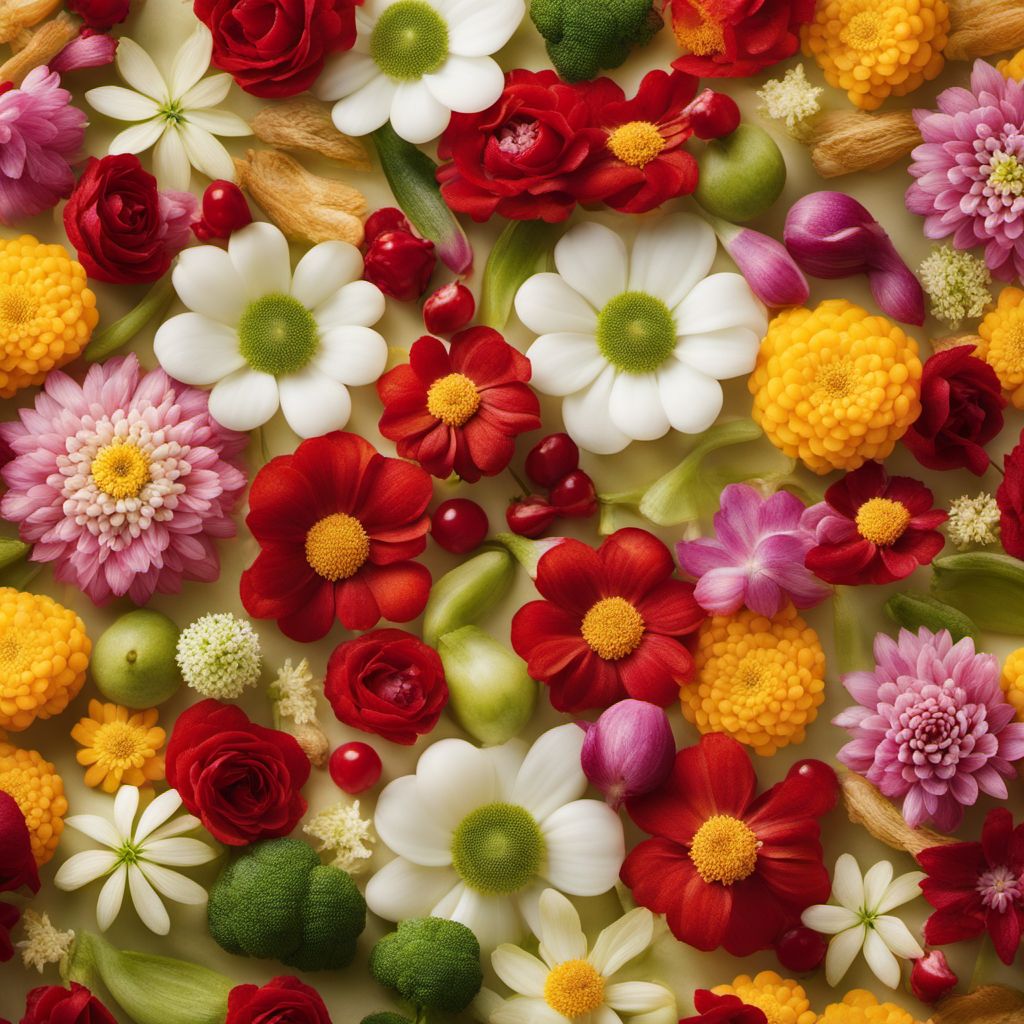
Ingredient
Flowers used as vegetables
Edible Blossoms
Flowers used as vegetables encompass a wide range of edible blossoms, including nasturtiums, squash blossoms, and hibiscus flowers. These delicate and vibrant flowers offer a range of flavors, from peppery and spicy to sweet and tangy. With their beautiful colors and intricate shapes, they are often used as garnishes or incorporated into salads, soups, and stir-fries to elevate the visual appeal of the dish.
Origins and history
The use of flowers as vegetables dates back centuries and can be traced to different cultures around the world. In Asian cuisines, flowers like chrysanthemums and daylilies have been used for their medicinal properties and as ingredients in traditional dishes. In European cuisines, flowers such as violets and lavender have been used in desserts and beverages. Today, flowers used as vegetables are embraced by chefs and home cooks alike for their unique flavors and aesthetic appeal.
Nutritional information
Flowers used as vegetables are low in calories and rich in antioxidants, vitamins, and minerals. They provide a burst of color and flavor to dishes without adding excessive calories or fat. However, it is important to ensure that the flowers are sourced from organic and pesticide-free sources to avoid any potential health risks.
Allergens
Some individuals may have allergies or sensitivities to certain types of flowers used as vegetables. It is recommended to exercise caution and consult with a healthcare professional if you have any concerns or known allergies.
How to select
When selecting flowers used as vegetables, choose blossoms that are fresh, vibrant, and free from blemishes or signs of wilting. Look for organically grown flowers to ensure they are free from pesticides or other harmful chemicals. If purchasing from a farmers market, ask the vendor about the cultivation practices and ensure that the flowers are safe for consumption.
Storage recommendations
To maintain the freshness and quality of flowers used as vegetables, store them in a cool and humid environment. Place them in a container with a damp paper towel or store them in a perforated plastic bag in the refrigerator. Use them within a few days of purchase or harvest to enjoy their optimal flavor and appearance.
How to produce
Growing flowers used as vegetables can be a rewarding experience. Many varieties can be easily grown in home gardens or containers. Research the specific flower variety you wish to grow and follow the recommended planting and care instructions. Ensure that the flowers are grown in pesticide-free soil and avoid using any chemical fertilizers or pesticides.
Preparation tips
Flowers used as vegetables can be prepared and used in various ways. They can be used as edible garnishes for salads, soups, and appetizers, adding a pop of color and flavor. Some flowers, like squash blossoms, can be stuffed with cheese or other fillings and then baked or fried. Others, like hibiscus flowers, can be dried and used to make teas or infused into syrups for cocktails or desserts.
Culinary uses
Flowers used as vegetables are commonly used in cuisines around the world. In Asian cuisines, they are often incorporated into stir-fries, soups, and hot pot dishes. In European cuisines, they are used in salads, desserts, and beverages. Additionally, flowers used as vegetables are popular in modern culinary trends, where they are used to add a touch of elegance and creativity to dishes in fine dining establishments.
Availability
Flowers used as vegetables can be found in various regions and countries, depending on the specific flower variety. Nasturtiums, for example, are commonly found in South America, while squash blossoms are prevalent in North America and Mediterranean regions. Hibiscus flowers are widely cultivated in tropical and subtropical regions around the world.
